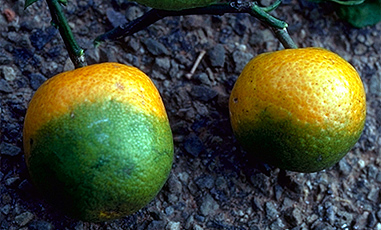New drug-delivery tactic for citrus greening disease gets $1M grant

The U.S. Department of Agriculture’s National Institute of Food and Agriculture has awarded a $1 million grant to Kurt Ristroph, from Purdue University.
Ristroph, who is an assistant professor of Agricultural and Biological Engineering, is developing nanocarriers as an antibiotic delivery system to help plants fend off citrus greening disease.
However, past attempts to fight the bacteria with antibiotics have failed. Ristroph’s approach entails applying nanocarrier-based treatments, which are presently being tried on tomato plants. The foundational work from this research will be used to formulate treatments for citrus greening.
Formally known as Huanglongbing (HLB), citrus greening disease has left the Florida citrus industry near total ruin since 2005. Spread by the Asian citrus psyllid, an insect that resembles aphids, the disease also has afflicted citrus trees in California and Texas.
“We’ve shown that our nanocarriers, at least in another plant system, can get into the phloem and down to the roots,” Ristroph said.
The main issue, Ristroph explains, is to “get the antibiotics to where they need to go in the plant”. For citrus greening disease, this usually means the trunks and roots of trees, from where it attacks their vascular systems.
“If we make our nanocarriers encapsulate an antibiotic that will kill this disease, then put them on the leaves of a tree, we think they’ll go inside the tree, down the phloem to the roots, and they’ll release their antibiotic drug along the way. Maybe it can kill all the bacteria and maybe it can cure the disease.”
According to Ristroph and his team, the mixing technology they’re using to make nanocarriers is similar to the one used by pharmaceutical companies like Pfizer.









































